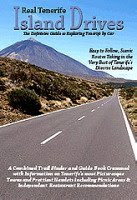It’s something you tend to erase from your memory when you’ve lived here for a while (isn’t that the brain’s way of dealing with bad experiences), but initially for us Puerto de la Cruz, La Orotava, Santa Cruz, La Laguna and many, many other places on Tenerife all made cracking the Da Vinci Code seem like child’s play compared with finding a place to park.
Of course once you get to know places you discover that there are car parks all over, but this falls into that old Tenerife approach to imparting helpful information to others: ‘you have to already know where the car parks are to know where the car parks are.’ The same thinking applies to fiestas – ‘you have to know what times fiesta events take place to know what time they actually take place.’
If that doesn’t make any sense, spend some time here and it soon will.
Anyway, here’s a brief guide to the big 4 where parking doesn’t have to be a high blood pressure inducing nightmare…
Puerto de la Cruz
Puerto has one of the biggest free car parks on Tenerife and it’s right in the centre of town beside the harbour. The hard bit comes in trying to find it for the first time.
A lot of maps show the area that is actually the car park as the ‘Parque Maritimo’ and sometimes, a bit more accurately, as ‘futuro Parque Maritimo’.
The truth is that it’s been the ‘futuro parque maritimo’ for 30 years, but is, and will be for quite a while longer, the main town car park.
It’s just one of Tenerife’s quaint, or frustrating depending on your viewpoint, little foibles. The main access is beside the town’s football pitch (accessed from the coastal road at Playa Jardín).
La Orotava
Apart from fiesta times, it’s usually easy to park on the residential streets below the Iglesia de la Concepción. However, you have to know your way around to get to them from the motorway. It’s easier for visitors to follow the TF21 (road to Mount Teide) and head right into the San Agustín car park (well signposted) in the centre of town. It’s right on the edge of the old town, so perfect for exploring Tenerife’s most noble town.
Santa Cruz
 God bless the new bus station car park. This has to be the best car park in the world. It’s bright, cheap, modern and I can’t think of anything else on Tenerife which has been so well thought out. A lighting system makes finding spaces easy even on the busiest of days (green light means a free space). it’s a 10 minute walk to the centre of town – a fact which deters a lot of Tinerfeños from parking there, so it’s rarely too busy. It’s also easy to get to from the motorway – straight down Avenida Tres de Mayo. It makes driving into the city a joy.
God bless the new bus station car park. This has to be the best car park in the world. It’s bright, cheap, modern and I can’t think of anything else on Tenerife which has been so well thought out. A lighting system makes finding spaces easy even on the busiest of days (green light means a free space). it’s a 10 minute walk to the centre of town – a fact which deters a lot of Tinerfeños from parking there, so it’s rarely too busy. It’s also easy to get to from the motorway – straight down Avenida Tres de Mayo. It makes driving into the city a joy.La Laguna
Oh, well. What can you say about La Laguna? It’s a test of nerve for sure. The old town’s narrow streets are particularly testing with drivers unsure of who’s got right of way. Only this week I watched a small white van plough into the side of a car at a junction (nobody was hurt). Amusingly, even the mini version of La Laguna at Pueblo Chico has minor car accidents on its model streets. There are car parks, but negotiating the maze of streets to find them is the big problem.
I found the perfect solution – a free car park on the edge of the old town reached from the ring road which skirts La Laguna on the way to Tegueste. It was perfect. Even on fiesta days I managed to park there easily… until the authorities designated it as the space for a new health centre. However, it was right beside the market which does have a large underground car park, so it’s still a good spot for parking without having to drive through the city.
These are only a brief snapshot, but hopefully they might help some poor souls avoid parking hell on Tenerife.














